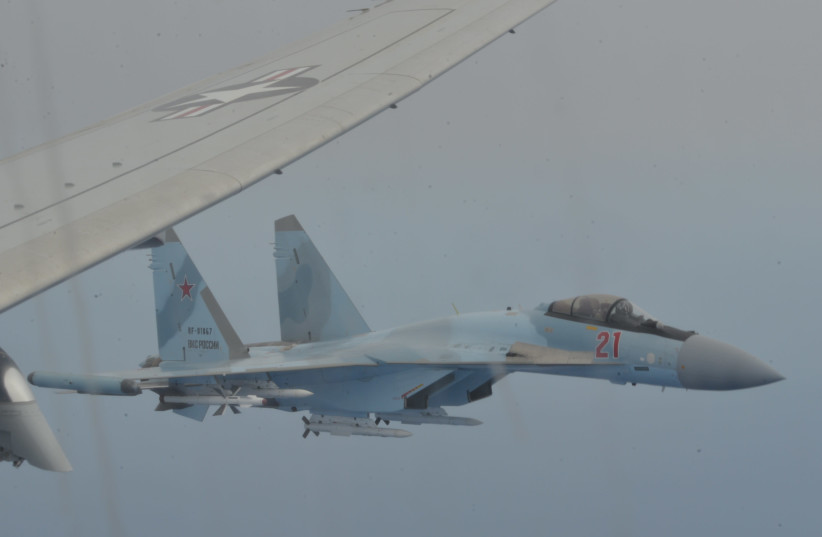Russia has boosted its rhetoric about the US role in Syria, after a series of incidents in which Russian warplanes harassed and even damaged US drones.
In Syria, the US uses the Reaper drone, and recently moved F-22 fighters to the Middle East to counter Russia’s threats. The Americans are in Syria to fight ISIS and back the Syrian Democratic Forces (SDF), but the Syrian landscape is complex and Russia plays an important role backing the Syrian regime, while Turkey, another player, also occupies part of Syria.
According to Russian state media TASS, Russian President Vladimir Putin said that “Russia is ready for any scenario, but does not want a direct military clash with the US,” adding that “we are always ready for any scenario, but no one wants this. On an American initiative, we once created a special mechanism to prevent these conflicts; we have department heads that communicate directly with each other, and consult on any crisis situation. This shows that no one wants clashes.”
Russia has accused the US of “dangerous approaches” to Russian aircraft, essentially making the same accusation the US has made, upping the rhetoric and war of words. Russia hopes to balance the US claims, which are backed up by video footage from the drones.
While the US claims are backed up by evidence, there is none that shows US drones approached Russian aircraft. Reaper drones do not fly very fast, especially compared to Russian fighter jets (Russian SU-34 or Su-35 jets can fly four times as fast as the US Reaper). It is the equivalent of a modern jet fighter against a World War II-era propeller plane.
Nevertheless, Russia’s accusations still stand that US drones came “dangerously close” to Russian jets in northwest Syria. TASS reported that “according to the Russian side, since the beginning of this year, the aviation of the US-led international coalition has made “23 dangerous approaches to the aircraft of the Russian Aerospace Forces in the skies over Syria, while drones have violated flight safety in Syria 340 times. On July 27 alone, fighter jets of the pro-US anti-terrorist coalition violated Syrian airspace eight times.”

Comments regarding potential spillover of conflict in Syria mirror Ukraine
Putin’s comments about a potential clash in Syria are fascinating in the context of concerns that the Ukraine conflict could lead to a clash with NATO. Now, Russia is upping rhetoric about Syria. While Putin’s claims are wrapped in words about not wanting a clash, clearly this is a threat about a potential clash occurring. Putin’s words were reported in Middle Eastern media outlets such as Al-Ain, and in other places. This is a new level of Russian rhetoric when it comes to Syria.
Moscow is clearly concentrating on US drone operations. Because drones fly more slowly and often lack defenses, it is easier for Russia to monitor them, than to have to go up against the more advanced F-22 fighter jet. US drones also fly more missions over northwest Syria near Idlib, Afrin, and other areas where Turkey’s occupation forces are present.
Extremist groups, such as al-Qaeda and ISIS remnants, often operate in areas where Turkish forces are present and where the Turkish-backed Syrian rebels operate, along with other groups such as Hayat Tahrir al-Sham. As such, it may be that US drones are in northwest Syria primarily to monitor extremist groups and wait for targets to emerge.
However, from Russia’s perspective, the drones may be a way to interdict or deter Russian operations in Idlib against groups like HTS. This means that Russia would likely prefer the prying eyes of US drones be removed. The overall evidence is that incidents between the US and Russia in Syria are increasing.
